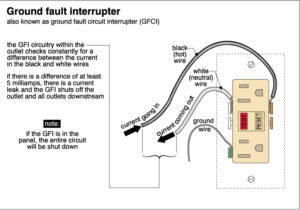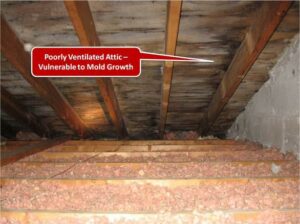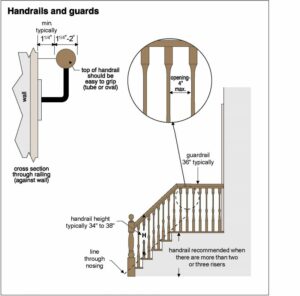Quick Tips For Home Safety
The importance of home safety
When it comes time to adjust our clocks, it’s a good reminder to address some of the safety issues around our homes. While our homes provide us with shelter, security and comfort, they do require attention in order to keep us from harm. It is wise to spend a few hours twice a year to invest in the safety of you and your loved ones. Here are a few tips to keep your house safe.
Tip #1 – Make your home fire safe
Whether your smoke detectors are wired or standalone, ensure that they have functional batteries by testing them monthly and replacing the batteries twice a year. You must have at least one smoke detector on each floor, but we recommend more.
One of the biggest causes of fires is trapped lint inside a dryer exhaust hose catching fire. This occurs most often when homeowners use plastic vent hoses. We recommend non‐corrugated metal to use for dryer exhausts. Also make sure combustible materials are well away from combustion appliances such as furnaces and water heaters. Have fire extinguishers in your kitchen and mechanical room. Light fixtures in closets should be encased in a metal cage, as exposed bulbs in closets can start a fire. Ensure you have two clear paths of escape from anywhere in the house, should there be a fire. This is especially true if you have a finished living space in the basement. Basement and accessory apartments may require special escape windows and additional fire safety requirements. If you have one of these,
ensure that yours complies with the building code.
Tip #2 – Protect yourself from gas and carbon monoxide
Although natural gas and propane are used residentially, their explosive nature makes them inherently dangerous. These gases are naturally odorless, but our utilities add a ‘rotten egg’ odorant to allow occupants to detect a leak. If you smell this, you should open your windows and contact your gas company immediately.
One of the other safety aspects of using fuels such as natural gas is the release of byproducts such as carbon monoxide. This gas is colorless, odorless and tasteless, but high concentrations can be deadly. Young children and seniors are especially vulnerable.
Most homes contain one or more of the following gas appliances which have a potential for the release of carbon monoxide: furnaces or boilers, water heaters, fireplaces and ranges. Appliances using wood or oil can also be a risk.
Similar to smoke detectors, it is very important to make sure carbon monoxide detectors are placed throughout the house, and that their function and batteries are periodically tested. If you have an attached garage, ensure that there is no way for exhaust fumes from cars to enter the house. If you have a direct entrance door from the garage to the home it must have an automatic closing mechanism.
Tip #3 – Avoid electrical shock or electrocution
Because electricity is invisible, people often ignore how dangerous it can be. Many falsely assume that 120‐volt power in most North American homes is not dangerous. It is the current (amps) that presents danger. Typical household circuits can deliver up to 15 amps before tripping at the main panel. It takes less than 0.1 amps to stop a human heart. Electricity in a home must be respected. Take the time to do a quick inspection around your house to make sure there are no poorly secured or exposed wires.
Outlets, switches and junction boxes should all have proper cover plates. Check that there are no unprotected openings in panels where children might insert their fingers. And do not overuse an outlet! If a circuit fails to trip at the panel, you can cause an overheated wire and start an electrical fire. Do not ignore vermin residing in your attic or roof spaces, as they can cause damage to wiring which can also result in electrical fires.

Invest in having an electrician check inside your service panel to verify the safety of your connections, and that wiring, breakers and fuses are properly sized. If you own a home with older knob‐and‐tube or aluminum wiring, you may be more vulnerable to electrical accidents if wires are poorly connected.
A home inspection should help you identify if this type of wiring exists, but you should have an electrician do a thorough inspection for any work needed to bring it up to current safety standards. Ground fault circuit interrupters (GFCIs) are special outlets for safety and are required in all new construction. They take the place of standard outlets where they are close to sources of water such as bathrooms, kitchens and the outside. Older homes don’t have these but we recommend making this upgrade for additional safety.
Tip #4 – Address mold and hazardous materials
Hazardous materials, which may include asbestos, lead, and certain types of insulation may be present in older homes. If you are concerned about mold and hazardous materials, you should contact an environmental consulting company. While we do not specialize in this area, we wanted to bring these issues to your attention.

Since mold is the result of water and moisture, there are some precautions you can take to minimize the chances of having mold in your house. Finished basements are especially vulnerable between the foundation and finished wall. Ensure all water is well managed from the exterior, which includes properly functioning gutters and downspouts, and good grading to keep water from collecting near the house.
Areas of high humidity, such as bathrooms and kitchens, need to have adequate ventilation. Have a peek inside your attic to make sure there is proper ventilation, as moisture from inside the house is constantly leaking in.
Hazardous materials such as asbestos or lead may be present in insulation, piping, paint, siding, flooring, duct and radiant piping insulation, and many other facets of the home. They are generally not a concern if left alone. However, they can be an issue if they are disturbed inadvertently by homeowners or contractors performing demolition work as part of renovations. Make sure to take proper precaution before any work begins if these materials are in your home.
Tip #5 – Keep the bad guys out
One of the unfortunate realities of living in dense cities is the threat of crime. The sad fact is that break‐ins and home invasions do occur. To protect yourself, create a deterrent for such activity. If you have neighborhood watch in your community, be a part of it. This topic is outside the expertise of home inspectors, but we have some basic information to share.
One of the first things you should do is minimize or trim trees and shrubs surrounding your house. This gives criminals less of a hiding spot. Install lights that turn on with motion sensors outside. Exterior doors should have deadbolt locks and their frames should be attached with longer screws to minimize their chances being easily kicked in. Patio doors should have a bar that prevents them from sliding open. Have timers that turn lights on and off when no one is home. Finally, invest is a good home alarm system and have it monitored by a reputable security company. These systems can include motion detectors, glass break sensors (great for basement windows), contacts for doors and windows, and even cameras that can be monitored on your smartphone! Having a backup cellular signal in case your phone line or cable gets damaged is a good idea when installing an alarm system.
Tip #6 – Research other safety concerns
What we have discussed are some of the primary safety concerns in a house. There are numerous other issues that are better addressed by experts in their industry. However, if you follow the advice provided above, you will be part of a minority that have already taken extraordinary steps to ensuring that your house is safe for you and your family.

The following are a list of other safety issues that you should do further research on to see if they are things that need to be addressed in your home.
‐ Exterior structures including decks, balconies,
steps, and porches
‐ Pools and hot tubs
‐ Interior components such as stairs and railings
‐ Structural deficiencies due to poor workmanship
or damage (mechanical and water)
‐ Use and maintenance of fireplaces and heating
stoves
‐ Poorly installed plumbing systems resulting in
cross contamination
‐ Safety measures if the home is occupied by
children or seniors
‐ Emergency contingencies in case of a power
outage
Tip #7 – Schedule safety meetings
Schedule a time with your family twice a year to sit down and go over safety around the house. This is especially important regarding fire safety. Although we all know that safety is important, it can be a boring topic. If you get everyone involved, it can be fun!
